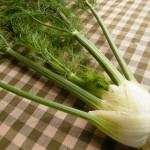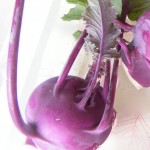About Makaria Farm
Makaria Farm offers organic, fresh-picked vegetables and strawberries through our CSA program, our farm stand, and local farmer's markets. We're located just south of Duncan, B.C. in the Cowichan Valley on Vancouver Island, British Columbia.
This gallery contains 1 photo.
Big, beautiful lettuce leaves are a perfect replacement for taco shells or tortillas, especially if you’re striving to eat more vegetables (and less corn or wheat). Once prepared, all your ingredients can be kept in the fridge and brought out … Continue reading →
This gallery contains 1 photo.
Here are two ways to incorporate healthy kale leaves into your menu aside from the usual steam or sauté methods: First … 1. Rinse/wash your kale leaves. (If the stems are thick, pull them off and sauté them separately.) Dry … Continue reading →
This gallery contains 1 photo.
Abundant and versatile, zucchini are a mainstay of summer eating. Our default recipe is to sauté sliced zucchini with crushed or minced garlic cloves and a little oil/butter: it’s a delicious, easy side dish for breakfast, lunch or dinner. Other … Continue reading →
This gallery contains 1 photo.
Kale, Chard, Spinach, Beet Tops, Etc … Here’s an easy recipe that applies to pretty much any leafy green: 1. Cut off the stems if they’re denser than the leaves and eat these separately (sautéed or roasted, or chopped and … Continue reading →
This gallery contains 1 photo.
If you enjoy anise or black licorice, fennel is your vegetable. The foliage is especially aromatic and flavourful, although the bulb is more often the star in the kitchen. Fennel is a wonderful ingredient in soup (try it with leeks, … Continue reading →
This gallery contains 1 photo.
Kohlrabi is one of the strangest looking and least known vegetables, but it’s well worth getting to know. While the leaves and stems can be cooked and eaten, the highlight is the bulb. Before biting in to the bulb, peel … Continue reading →
This gallery contains 1 photo.
There are many fresh foods that I didn’t know existed until we started our farm, including radish seed pods, stinging nettles, kale buds and garlic scapes. In the early spring we dine on steamed shoots from over-wintered kale (they taste … Continue reading →
Like all fruits and vegetables, there are many, many different kinds of strawberries. Two categories of strawberries are “June-bearing” and “ever-bearing.” June-bearers are more common in the Cowichan Valley: they produce heavily in June/July, then focus on reproducing through runners … Continue reading →
Our farm has two nettle patches: one up front by the old sheep shed, and another larger patch in the back by our orchard. Every April the nettles start to grow, and I wander out on weekends to harvest bag-fulls … Continue reading →
Roasted veggies is a favourite sidedish of ours. It’s adaptable to what’s seasonally available, and the leftovers can be used in soups or reheated as-is (great for breakfast, along with eggs and toast!). Optional ingredients Kohlrabi: stems cut into bite-sized … Continue reading →
One secret weapon for seasonal eaters like us is winter squash. Harvested in the fall, winter squash will keep for months if stored properly. Squash = creamy soups, easy side dishes, rich pies and other treats through the winter and … Continue reading →
First — a general word about: Leafy Greens Leafy greens are an excellent asset to a garden: kale, chard and lettuce last well into the winter (and can overwinter, if protected from extreme cold or snow). The plants will continue … Continue reading →
Why bother using canned pumpkin when it’s so easy to make pumpkin pie from scratch? Pumpkin pie can also be made with most winter squashes. Prepare the crust Make the pie shell. (Click here for Makaria Farm’s favourite pie crust … Continue reading →
Fresh-picked lettuce leaves can keep for a surprisingly long time. Wash the leaves, trip off any wilted bits and the stem, and store the leaves in a plastic bag or container. We’re often rushed for meals so I wash a … Continue reading →
Kale chips taste a lot like potato chips, but are a much healthier (and niftier!) option. Wash and dry kale: use a salad spinner to get rid of excess moisture. Coat the leaves in olive oil or another flavourful oil … Continue reading →
Hold onto your butt: Heather’s going to share her family’s famous pie crust recipe. Not that it’s a secret. We give it to anyone who asks. Strangely, even with a good recipe in hand, many people are intimidated by the … Continue reading →
This recipe is from Clemens and Sheila, two wonderful local businesspeople and passionate foodies who have been very supportive of our farm. Heat olive oil in a pan. Add 1/2 sweet onion, sliced or chopped. Cook until translucent. Add: Handful … Continue reading →
Remove the tops and compost or dry them to use as carroty seasonings in future soups or stews. Store the carrots in cold water in the fridge for a week, or washed and in a bag or Tupperware for months. … Continue reading →
We first ate lettuce wraps at the home of our friends Brian and Erin, and it was a threshold experience: we’d finally found a “we can grow the ingredients” replacement for tacos. This recipe isn’t actually Brian and Erin’s, it’s … Continue reading →
Like many vegetables, it took us a few years to figure out how to grow consistenly beautiful, great-tasting carrots. Now they’re one of the most satisfying vegetables we grow: carrots are an easy snack, raw and hosed off in the … Continue reading →
“It’s So Healthy – But What Can I Do With It??” Parsley Soup Recipe Shared by Dan & Vicky Fox Wash parsley really, really well to rid it of bugs and dirt. One option is to immerse the parsley in … Continue reading →







